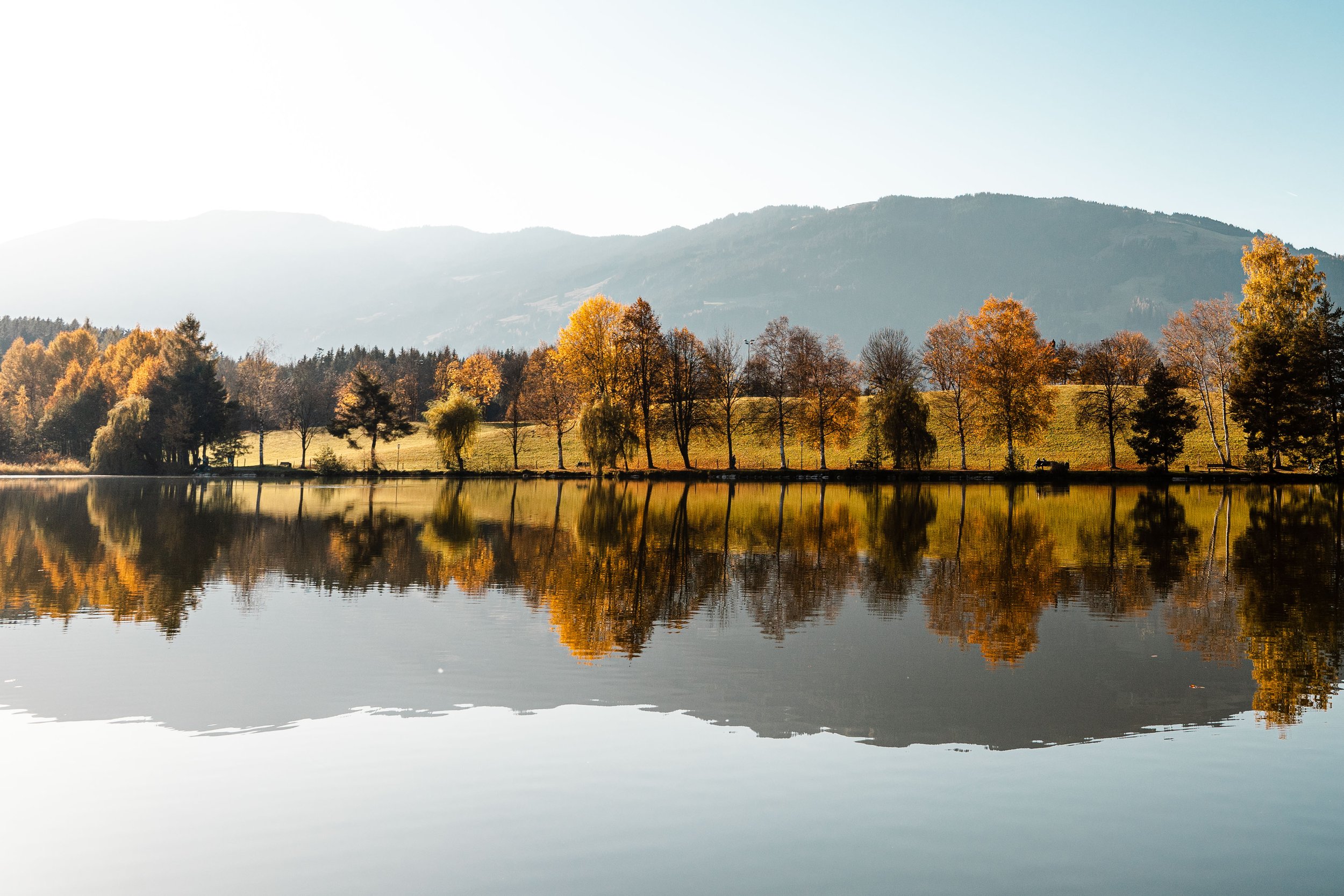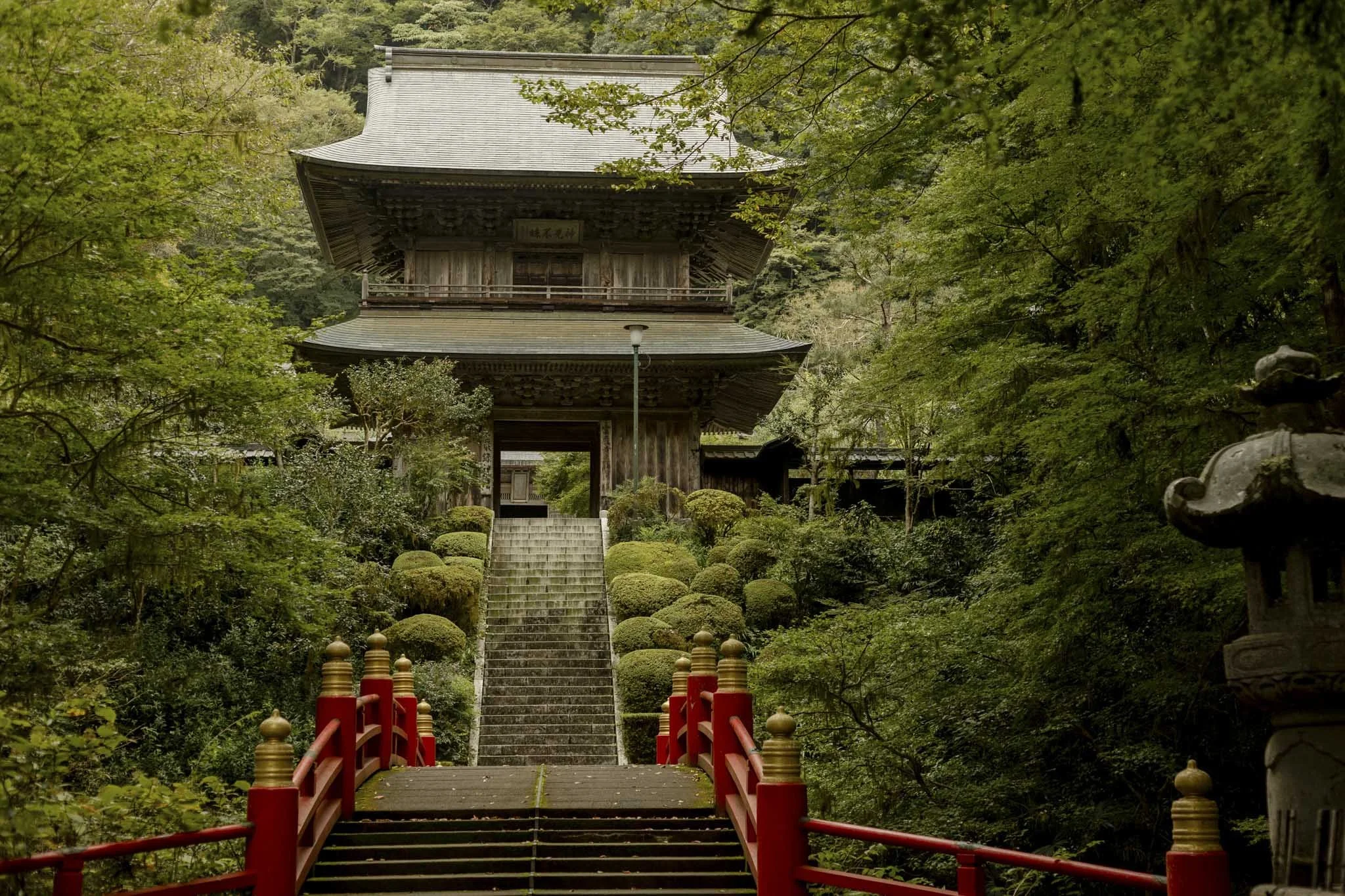Letter from Leogang
Meeting Austria for the very first time.
Words by Kasra Lang
Austria really looks like Austria, if you know what I mean. It looks exactly as you’d expect, exactly as you’d hoped, like a quote of itself. There is an exact one-to-one ratio between the Austria of the mind and its rock-and-soil reality. I don’t think I’ve ever been to a place that corresponds so precisely with my preconception of it. There it is, heaven’s tricolour flag in the frame of my vision - green of greens on the valley floor, a holy blue up top, and in between, a more complicated shade of limestone silver: the Alps sheared upwards.
Every bad picture I take is a solid contender for the cover of a major international travel magazine. I swear it’s that easy - take aim, tap, and a marvel appears on the cracked screen of my phone. It’s as if the very concept of photographic skill disappears here. The real challenge is to take an ugly picture, and I just don’t have that sort of talent. Even a downward shot at my mud-speckled boots in the grass looks gorgeous. It’s uncanny, this self-referential image of beauty, as if I’ve been here before: a lingering memory of God’s garden.
Though in this Eden nothing is forbidden. (There is even an abundance of apple wine). There’s mountain biking in the summer, skiing in the winter, and year-round lounging about in the sauna, three sports which attract athletes of a professional standard. Nobody’s embarrassed at their nakedness in the spa, not even me, though admittedly it took me a moment to adjust to my renewed state of grace.
The local Leogang museum tells me the town relied on the salt trade for centuries. It was a terminally poor place, materially if not spiritually, until the miners and farmers reinvented themselves as hoteliers. The family-owned Naturhotel Forsthofgut (where I’m staying) hosted their first guests in 1990. Seven years later they sold their last cow. Despite this transformation the old spirit of the place remains, particularly in the 350 year-old farmhouse.
Given that I’m here during an Austrian autumn, I set out on a hike. Orange and red trees dot the otherwise evergreen mountain face, full of birch and spruce and coniferous larch. The constant hiss of the river follows us up the gorge. The higher you look, the rockier it gets above the treeline. Below us are alpine pastures, home to the most absurdly healthy-looking cows, well-fed and moaning.
My guides leads me to what they are tentatively calling a glacier. I say tentatively because there is apparently some debate whether this accumulation of ice - the result of successive avalanches over time - qualifies as a glacier at all. It is the Pluto of glaciers, so to speak, vulnerable to the caprice of human categorisation. One thing is certain: it’s vanishing. For decades the Bavarians, ever conscious of life’s priorities, used to drag huge blocks of ice over the mountains to cool their beers in the summer. Now, in October, there isn’t much permanent ice left.
The next day my guide bundles me into the ski lift. Above a certain elevation we vanish into the fog. It blocks the panoramic view, but I enjoy the atmosphere it imposes on us, the faint thrill of knowing what is there but can’t be seen. We walk for a few miles in the fog and drizzle, our anticipation heightening, until finally the sun breaks through the clouds, exposing the entire limestone massif drawn shut over the horizon. A wild, purple mountain.
The valley is its own contained world. The luxury restaurants never stray too far for their ingredients. That evening I am presented with a twelve-course meal, which is at least seven courses more than I have ever eaten in a single sitting. I was well-raised, so I obediently finished the whole dozen, even the fish (which I dislike) and the liver (which I despise) - but ten out of twelve courses are delicious, even on a full stomach. The main attraction is ultimately the irrepressible chef himself, who emerges from the kitchen to narrate the details of his concoctions. There is more than a twinge of madness to his brilliance. As the night progresses his English understandably deteriorates, until ‘goat’ and ‘God’ begin to sound like the same word, and after four hours of delirious eating, it’s not inconceivable that he is actually feeding us something perfect and holy, morsels of the divine.
God knows I’ve been treated well here. I spent my 20s camping in the mud in far-flung places, longing for my middle-of-the-road comforts, and admittedly I’m not opposed to this change. I’m a useless skier (that is, I’ve never touched a pair of skis) but somehow I’m already dreaming of a winter return, a day on the slopes, an evening in the spa. Normally I try my best to temper my expectations but on the available evidence - Austria’s autumn idyll - it feels safe to indulge in runaway anticipation, in good days delivered.
For more Austrian inspiration, click here.
Rambling in the Lake District
Rambling in the Lake District with Athena Mellor.
Words and photographs by Athena Mellor
“I wandered lonely as a cloud”, proclaimed Wordsworth on rambling in the Lake District. Yet how often do you see just one single cloud? While a lone cloud may grace the skies on a clear day, more often than not clouds wander lonely yet together, drifting steadily east or west, north or south. Normally I am that sole, brave cloud drifting along - alone yet never lonely. But this time I was joined by another on my ramble. Two stoic clouds running up hillsides in one of my favourite English locations, the Lake District, on a bitterly cold January morning.
The Lake District is a hill-walkers dream. I am quite certain that it would take more than a lifetime to ramble every trail it has to offer, to explore those that are yet to be discovered, and to admire every view. But I will try anyway. Indeed, there are certain places that, no matter how often I visit, never become boring. The very nature of nature is that no two days spent outside are the same - the changing winds and seasons, the different cloud formations and sunbeams. And then there is seeing somewhere you have seen multiple times through new eyes - the eyes of someone who is experiencing it all for the very first time. This happened when I took my younger sister to the Lake District and we spent two winter days in jumpers and walking boots, hiking to hilltops and running down mountains.



Winding roads of Cumbrian gold; fluffy white clouds dazzling the sky and fluffy white sheep gracing the fields. We were en-route to Blea Tarn; I was in the driver’s seat squealing every time a slightly more confident driver squeezed between us and the drystone wall on the other side - with less that an inch between both. We laced up our boots on arrival, added a couple of layers, swung cameras over our shoulders, and wandered down to the waterfront. Blea Tarn is a small body of water nestled beneath high peaks. If you’re lucky, you may see a clear reflection of the Langdale Pikes in the tarn. But on this particular day, the wind was sending ripples through the water and the reflection was non-existent - but the scene remained beautiful nonetheless. This place always seems peaceful - there is no phone service, few other walkers and nature is allowed to flourish. Protected by the National Trust, Blea Tarn will always be the place I tell people to go when they first visit the Lakes and the place I will constantly return to, until I’m 90 I hope - with tea and biscuits, a picnic blanket and a good book.






The next day, I had something more adventurous planned. From the village of Ambleside, we headed up and up and up through thick yellow grass and alongside crumbling drystone walls, past Low Pike then High Pike where the wind viciously whipped the bare skin on our cheeks and tugged exasperatedly at our hair tucked beneath woollen hats. We were walking and talking incessantly like only sisters can do, until I realised that we might possibly be quite lost... By this point the wind was relentless, and trying to manoeuvre a map to a readable position was impossibly difficult as the sky seemed determined to steal it away. Our hands were like icicles and with difficulty speaking I had to admit to my little sister, who had trusted me wholeheartedly with route-planning, “I have absolutely no idea where we are.” So together we traced the line we were supposed to walk and realised we had taken a completely different but parallel path. We made a plan to descend away from the wind as quickly as possible, and then hurtled down the hillside as the icicles in our hands defrosted and our spirits rose once again; greedily consuming the beauty of the surrounding landscapes before it was time to head south once more.
There is something I find so alluring about the Lake District. Perhaps it is in the combination of homely, welcoming landscapes that become unforgiving in a single gust of wind. Or it may be the way the air whispers soft tales of times gone by, or thoughts of the writers and poets who have sat on these banks and taken inspiration from these hills. When I am here, I want to close my eyes and absorb all that beauty and hope and the fragility of nature - but these landscapes cannot be taken away. And so all I can do is come back again and again until I am 90 - to sit on these grassy hilltops with tea and biscuits, a picnic blanket and a good book.
You can see more of Athena's work here @athenamellor and here wildandwords.com.




































Celebrating Cecil Beaton at Wales’ Hawarden Estate.